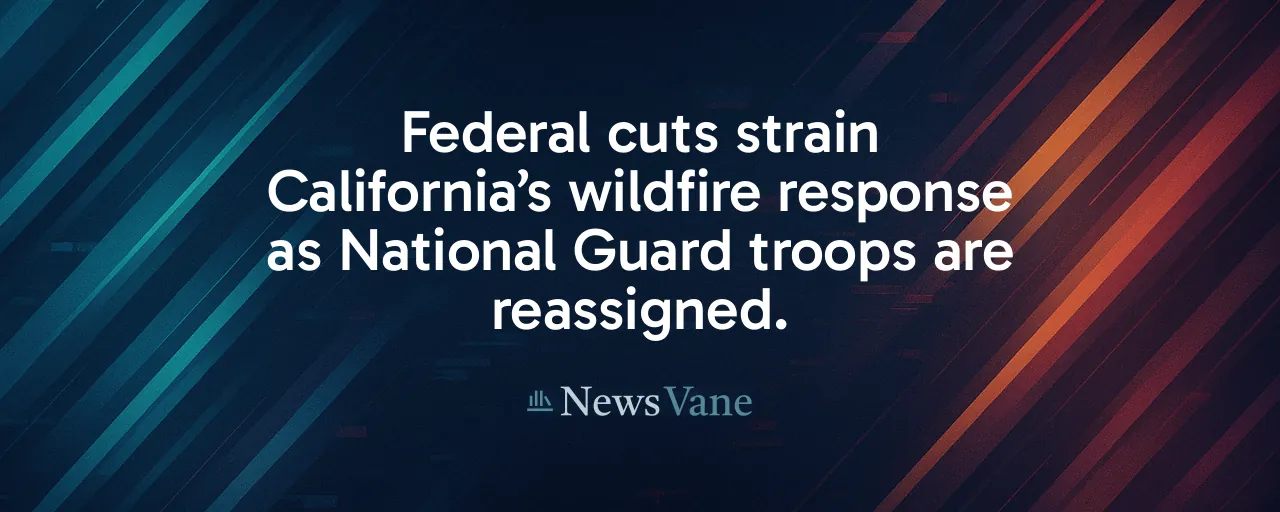Fire Season's Shadow Looms Large
California knows wildfire season's weight. In 2025 alone, over 2,300 fires have already burned across the state, and the peak months lie ahead. From rural Sierra towns to Southern California suburbs, residents brace for potential devastation. This year, however, the state's ability to combat these blazes faces unexpected strain, driven by federal decisions that have reshaped its firefighting resources.
The tension stems from a disconnect between state and federal priorities. California has built a formidable wildfire response system through years of investment, yet it now contends with reduced federal support. Staff cuts at the U.S. Forest Service and the reassignment of National Guard firefighters to Los Angeles have raised alarms. These changes spark questions about how to protect communities when fires ignite.
Wildfires wait for no one. As flames threaten homes and forests, California's preparedness hangs in the balance. Understanding the impact of these federal moves, alongside the state's response, reveals the challenges of fighting fires in a changing climate.
Federal Actions Reshape the Fight
The U.S. Forest Service, a vital partner in managing California's forests, has lost 10 percent of its workforce, including a quarter of staff handling logistics, weather forecasting, and planning. These roles are essential for coordinating wildfire response, and their absence could slow operations, a concern echoed by CAL FIRE Director Joe Tyler, who emphasized the criticality of having necessary firefighting apparatus and personnel for their mission. Even small delays can let fires grow beyond control.
Adding to the strain, 300 California National Guard soldiers, trained for wildfire prevention, were reassigned to Los Angeles armories. These troops, part of Joint Task Force Rattlesnake, account for three-quarters of the Guard's fire response capacity. Five of 14 fire crews now lack full staffing, pushing CAL FIRE to rely on overtime and mutual-aid agreements. A federal judge declared this move unlawful, citing misuse of federal authority, but appeals may delay resolution.
Some defend these federal decisions. Certain policymakers argue that Forest Service cuts streamline the agency, prioritizing timber production to reduce forest fuels and support rural economies. Others view the Guard's redeployment as a valid response to urban security needs, citing broad presidential authority. State leaders, however, stress the immediate risks to wildfire readiness.
California Steps Up Its Game
California refuses to falter. The state has invested over $2.5 billion in wildfire resilience since 2020, with $1.5 billion more planned. CAL FIRE has expanded its ranks, hiring 1,800 full-time and 600 seasonal firefighters each year. A recent $72 million package supports projects across 7,000 acres to curb fire risks, while a new C-130 Hercules airtanker strengthens the state's unmatched aerial fleet.
Governor Gavin Newsom's team has also eased regulations to speed up vegetation management and community protection projects. Nearly 1.9 million acres have been treated since 2021, aided by AI fire detection and a public dashboard tracking progress. These efforts aim to keep communities safe despite federal challenges.
Yet, gaps remain. Depending on emergency funds and private contractors to offset federal losses is expensive and temporary. As climate change fuels more intense fires, a strong state-federal partnership is critical. Without it, California's system, however robust, faces mounting pressure.
Climate and Competing Priorities
Climate change intensifies the stakes. NASA data reveals that extreme wildfires in the Western U.S. have doubled, with fire seasons now lasting over a month longer than decades ago. Hotter, drier conditions increase burn areas by nearly 40 percent, while wildfire smoke contributes to thousands of premature deaths yearly. These trends demand increased resources.
The resource debate reflects broader divides. State officials and environmental advocates emphasize the need for federal investment in prevention, citing California's goal of treating one million acres annually. Some federal policymakers, however, prioritize economic gains like timber sales over long-term resilience. Both recognize the growing wildfire threat, yet their strategies differ significantly.
Charting a Way Forward
California navigates a complex landscape. Its investments and innovations provide a solid base, but federal decisions create uncertainty. Restoring Forest Service staff and returning Guard troops to fire duties could ease the burden, though legal and political obstacles persist. For now, California relies on new hires and technology to fill the gaps.
The bigger picture calls for unity. State and federal agencies share the aim of safeguarding lives and land. Stable funding, clear legal boundaries, and joint planning could bridge current divides, ensuring resources match the escalating threat.
As fires loom, Californians remain vigilant. The state's resilience shines, but its success depends on aligning competing priorities. With so much at stake, the path forward demands cooperation and commitment.
